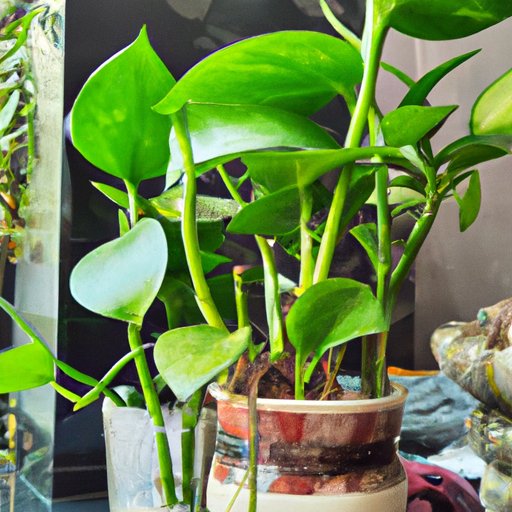
Money Plant Care Made Easy: Simple Tips for Happy Plants
Money plants are known for their unique appearance and their ability to bring good luck and prosperity to their surroundings. These plants are easy to care for and can thrive in various environments, making them a popular choice among plant owners. In this article, we will discuss the basics of money plant care and provide tips to ensure that your plant stays healthy and happy.
Understanding Your Money Plant
There are different types of money plants, including the Pachira Aquatica, Epipremnum Aureum, and Crassula Ovata. These plants are native to South America, Australia, and South Africa, respectively. Money plants are characterized by their unique leaf shapes and colors, which can range from green and yellow to variegated. They can grow up to several feet tall if left untrimmed, but can also be trained as small, compact plants. Money plants are found in homes, offices, and public spaces, and are believed to bring good luck, prosperity, and positive energy to their surroundings.
Caring for Your Money Plant
Money plants are generally easy to care for and require minimal attention. However, there are some important things to keep in mind to ensure that your plant stays healthy and happy.
Sunlight, Temperature, and Humidity
Money plants thrive in bright, indirect sunlight and warm temperatures ranging from 20 to 30 degrees Celsius. They can also tolerate varying levels of humidity, but prefer higher humidity levels of 50-60%. If your money plant is not getting enough light, its leaves may start to turn yellow and drop off. On the other hand, if it’s getting too much direct sun, it may exhibit brown patches or drooping leaves. If you notice any of these symptoms, adjust your plant’s placement accordingly.
Watering
Watering your money plant is an important aspect of care. It’s essential to maintain the right balance of moisture in the soil, as too much or too little water can harm the plant. The frequency of watering will depend on various factors such as the humidity and temperature levels in your home, the size of the pot, and the maturity of the plant. As a general rule, it’s best to water your money plant when the top inch of soil feels dry to the touch. Be sure to water around the base of the plant, and avoid getting water on the leaves as this can cause them to rot.
Soil and Potting
The right soil is essential for the growth of a healthy money plant. Money plants prefer well-draining soil that is rich in nutrients. You can use a mixture of potting soil, sand, and perlite to create an ideal growing medium. It’s also important to choose a pot that’s the right size for your plant. A pot that is too small will restrict the growth of the roots, while a pot that is too big may cause the soil to retain too much moisture, leading to root rot. When repotting your money plant, use a pot that is 1-2 inches wider than the current pot.
Pruning and Propagation
Pruning your money plant is important for maintaining its shape and size. You can do this by trimming off the tips of the branches, or by pinching off the new growth. If you want to propagate your money plant, you can do so by taking stem cuttings and placing them in soil or water until they develop roots. Once the roots are established, you can transplant the new plants into pots and care for them as usual.
Troubleshooting Common Issues
While money plants are generally hardy and easy to care for, they can still face a few common issues such as wilting leaves, yellowing leaves, and pests.
Wilting Leaves
Wilting leaves can be caused by overwatering, underwatering, or exposure to direct sunlight. Check the soil moisture level, and adjust your watering schedule as needed. If the leaves are getting too much or too little sun, move the plant to a more suitable location.
Yellowing Leaves
Yellowing leaves are a sign of stress or disease. Check the soil moisture level and ensure that your plant is getting enough sunlight. If the yellowing is widespread, it may be a sign of overwatering or poor soil drainage.
Pests
Money plants can be susceptible to pests such as spider mites, mealybugs, and scale insects. To remove these pests, wipe the leaves with a damp cloth or use a natural pest control solution such as neem oil.
Conclusion
Money plants are beautiful, low-maintenance plants that can bring a touch of nature and positive energy to any space. By following these simple tips, you can ensure that your money plant stays healthy and happy. Remember to provide it with the right amount of sunlight, water, and soil, and keep an eye out for any signs of stress or disease. With proper care, your money plant can thrive for years to come.





